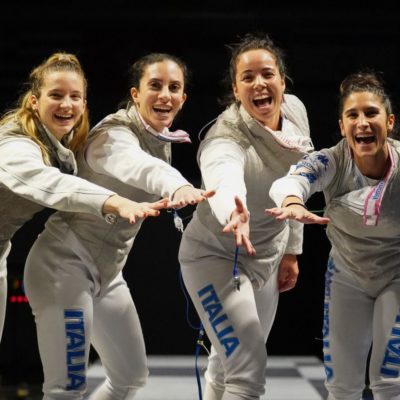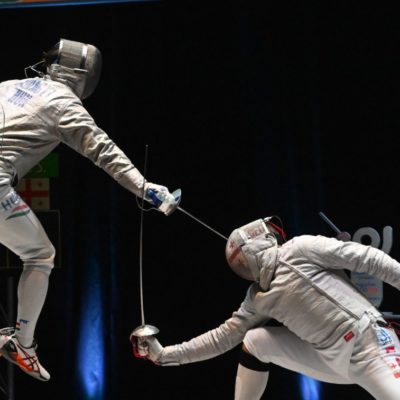{mosimage}3 time Men’s Foil World Champion Sergei Golubitsky takes some time to review the proposed rules changes to foil, where the game is going, and the role of the referee.
Below are questions and answers for April, 2004.
FN – Which comes first – “smart” fencing or “strong” fencing. (In other words, do you work on mental skills or physical skills first? Which is more important and at what time in a fencer’s training?)
{mosimage}SG – This question is similar with “which came first, the chicken or the egg?” The fencing coach has to develop both qualities in their pupil at the same time. In the beginning “stupid” and “weak” fencing comes first. Fencing is a very difficult sport: you have to make the right action at the right time, using the proper technique. Mental skills can be developed by playing games (soccer and other) and by relay-races. Very often a student has to deliver “over the top” – when he is tired but still has to achieve his goal.
A fencer cannot win without being ready technically,tactically and physically. All these 3 factors have the same importance in striving for victory. Overall, mental strength is the decisive factor in any sport. This is especially true when you are competing at the higher levels.
When you can do whatever you want (technically,tactically and physically) with your opponent on the strip, the role of mental strength becomes crutial. Without motivation and winning mentality all your fencing know-how is useless. Here’s a simple exercise for coaches: put your top student on the weaker team when playing games (soccer, basketball, etc.) and still “push” him, demand to win. Put student to fence for the weaker team, knowing that probably his team is going to lose in relay event. The goal of student has to be to win the team match.
These are some ways of developing the winning mentality necessary for a good fencer.
FN – How is fencing changed in the last 20 years? and What will fencing look like in the next 10 years?
SG – It became faster, more athletic, less smart, less interesting for those who love to see blade work. If you happend to see some counter-riposte, you would say: “WOW!” The “wow” doesn’t arrive too often these days. In the past the “wow” was much more frequent.
The future depends on change of rules. If fencers are “forced” to thrust again, we can (more or less) compare them with fencers of the “good old days”. I am afraid that we will see many more remises though. If the flick remains, we’ll see more or less the same fencing which is there nowadays.
FN – When you’re down 10-2 in DE’s, how do you turn the bout around?
SG – I have been down 9-3. I just started to fight, really fight for each touch, for each action, forgetting about technical aspects. It was just a street fight for me then. But don’t be foolled with my wording: to pull it off you need to be ready mentally, technically, tactically and physically.
In the end I felt that I was hungrier for victory then my opponent. It was bout at the Olympics in Sydney 2000.
Fencers should simulate such situations. Three good exercises are: Fence from being behind by several touches and try to win. The lower class of your opponent — the more touches he gets for his advantage. Bout to 1 touch only, like pentathletes. Practice winning 3-4 bouts in a row (against equally strong opponents).
{mosimage}Next week we’ll continue with more questions and answers from Sergei including some tips on dealing with Point in Line.
Sergei Golubitsky operates the Golubitsky Fencing Center at: http://www.gfc-world.netfirms.com/.
To submit your question, please send an email to [email protected] with “Ask Sergei” in the subject line.





